
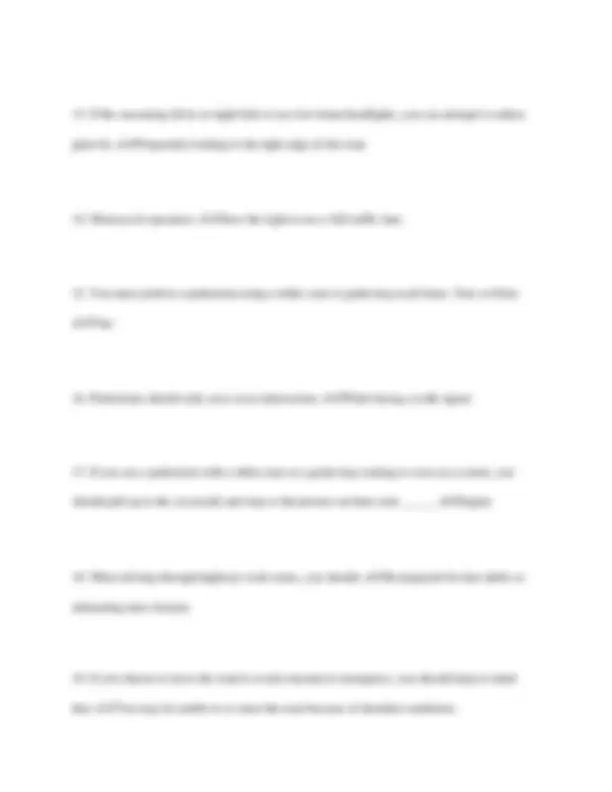
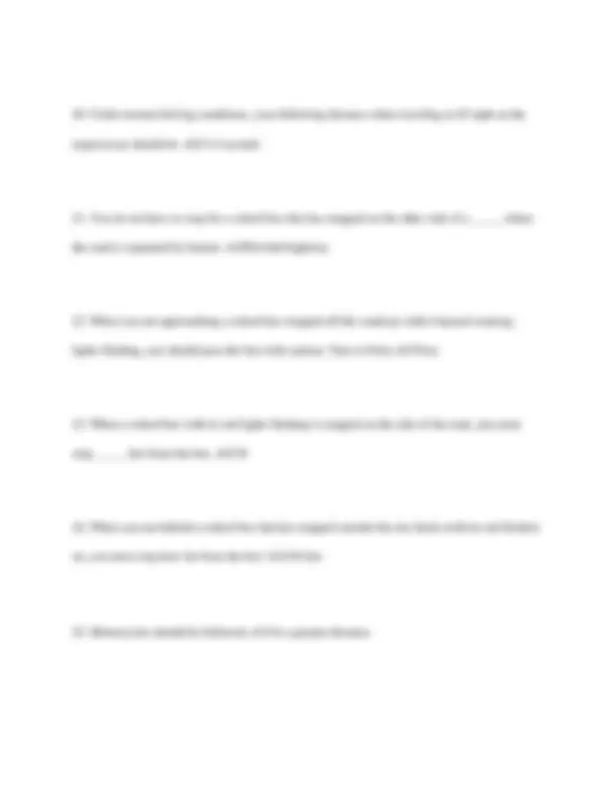
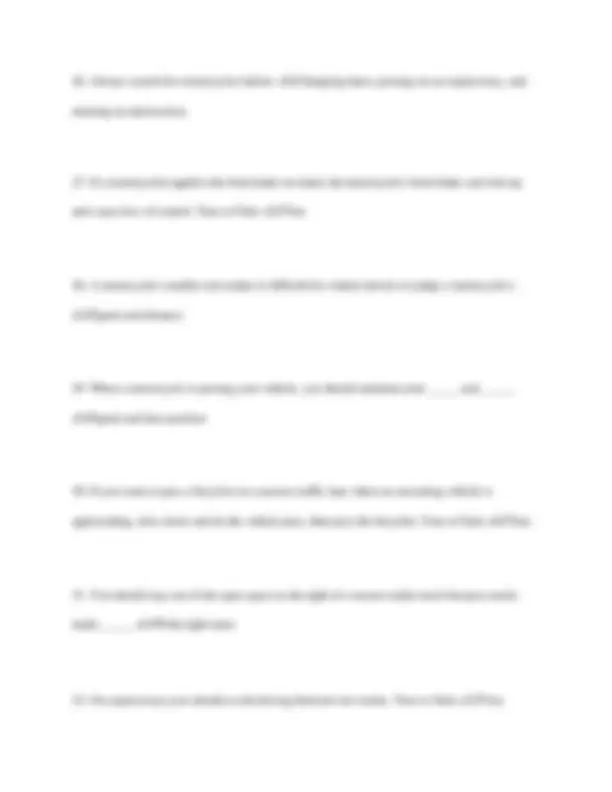
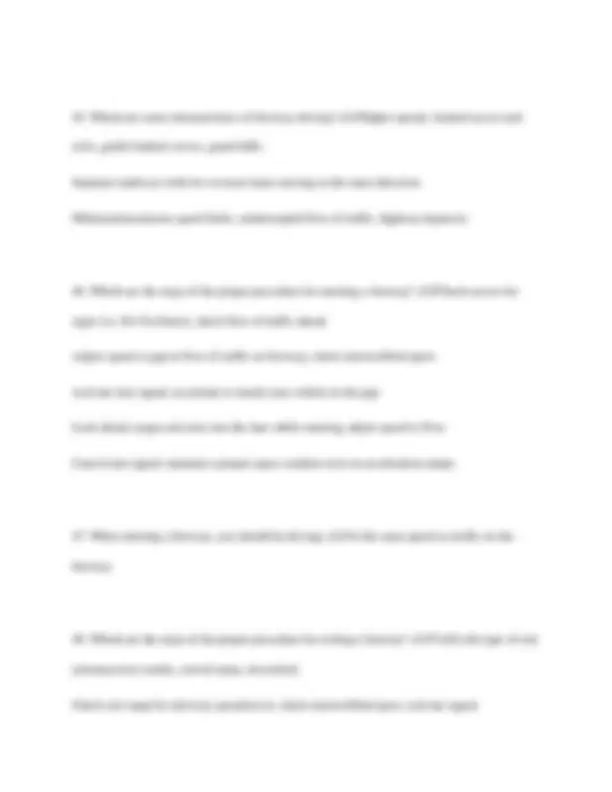
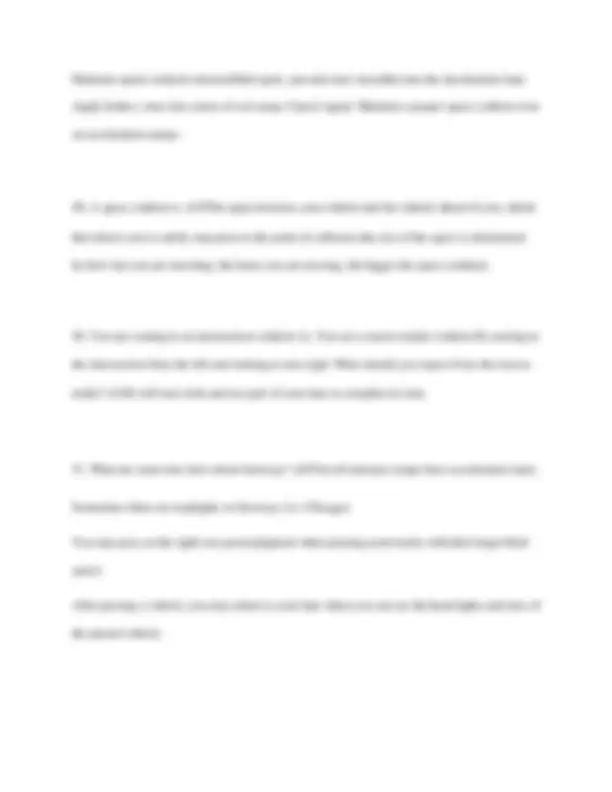
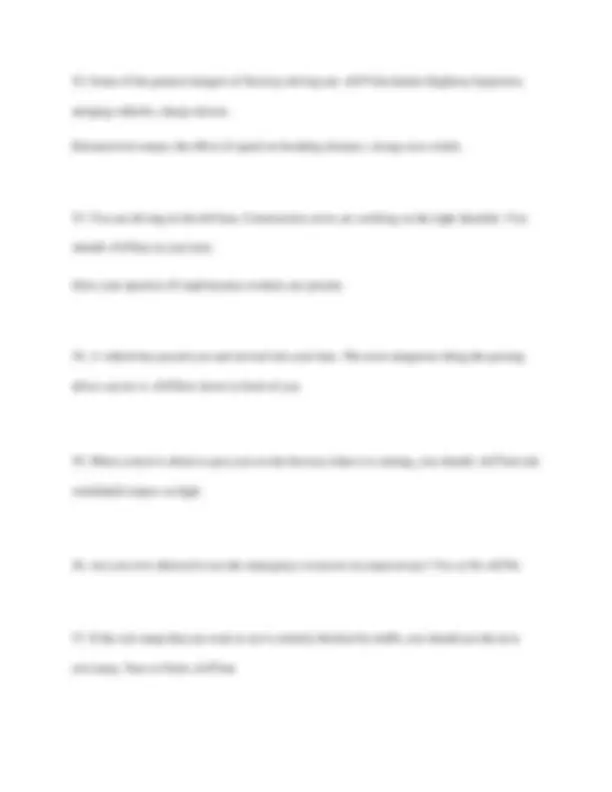


Study with the several resources on Docsity

Earn points by helping other students or get them with a premium plan


Prepare for your exams
Study with the several resources on Docsity

Earn points to download
Earn points by helping other students or get them with a premium plan
Community
Ask the community for help and clear up your study doubts
Discover the best universities in your country according to Docsity users
Free resources
Download our free guides on studying techniques, anxiety management strategies, and thesis advice from Docsity tutors
This worksheet focuses on essential driving practices and road rules, covering topics such as safe driving in adverse weather conditions, proper use of headlights, passing procedures, freeway driving techniques, and interactions with other road users like motorcycles, large trucks, and pedestrians. It provides a comprehensive overview of safe driving practices and road rules, making it a valuable resource for driver's education.
Typology: Exams
1 / 12

This page cannot be seen from the preview
Don't miss anything!







Used for HOV (high occupancy vehicles) such as buses/car pools.
Separate roadways with two or more lanes moving in the same direction.
Minimum/maximum speed limits, uninterrupted flow of traffic, highway hypnosis.
Adjust speed to gap in flow of traffic on freeway; check mirrors/blind spots.
Activate turn signal; accelerate to match your vehicle in the gap.
Look ahead, target and steer into the lane while entering; adjust speed to flow.
Cancel turn signal; maintain a proper space cushion even on acceleration ramps.
Check exit ramp for advisory speed/curve; check mirrors/blind spots, activate signal.
Entrance/exit ramps, the effect of speed on breaking distance, strong cross winds.
Slow your speed to 45 mph because workers are present.